Analyzing Labor Productivity in Global Supply Chain Management
VerifiedAdded on 2020/05/11
|5
|799
|23
Homework Assignment
AI Summary
This assignment analyzes global supply chain management productivity using a case study of Mack's guitar fabrication shop. It calculates labor productivity and multi-factor productivity ratios based on provided data, including production output, sales price, labor costs, material costs, and overhead costs. The assignment then explores the impact of different strategies to improve the multi-factor productivity ratio, such as increasing the sales price, improving quality to reduce defects, and reducing labor, material, and overhead costs. The analysis determines that improving quality, leading to fewer defective products, has the greatest positive impact on the multi-factor productivity. The solution includes detailed calculations and references to relevant literature on supply chain management and productivity.
1 out of 5
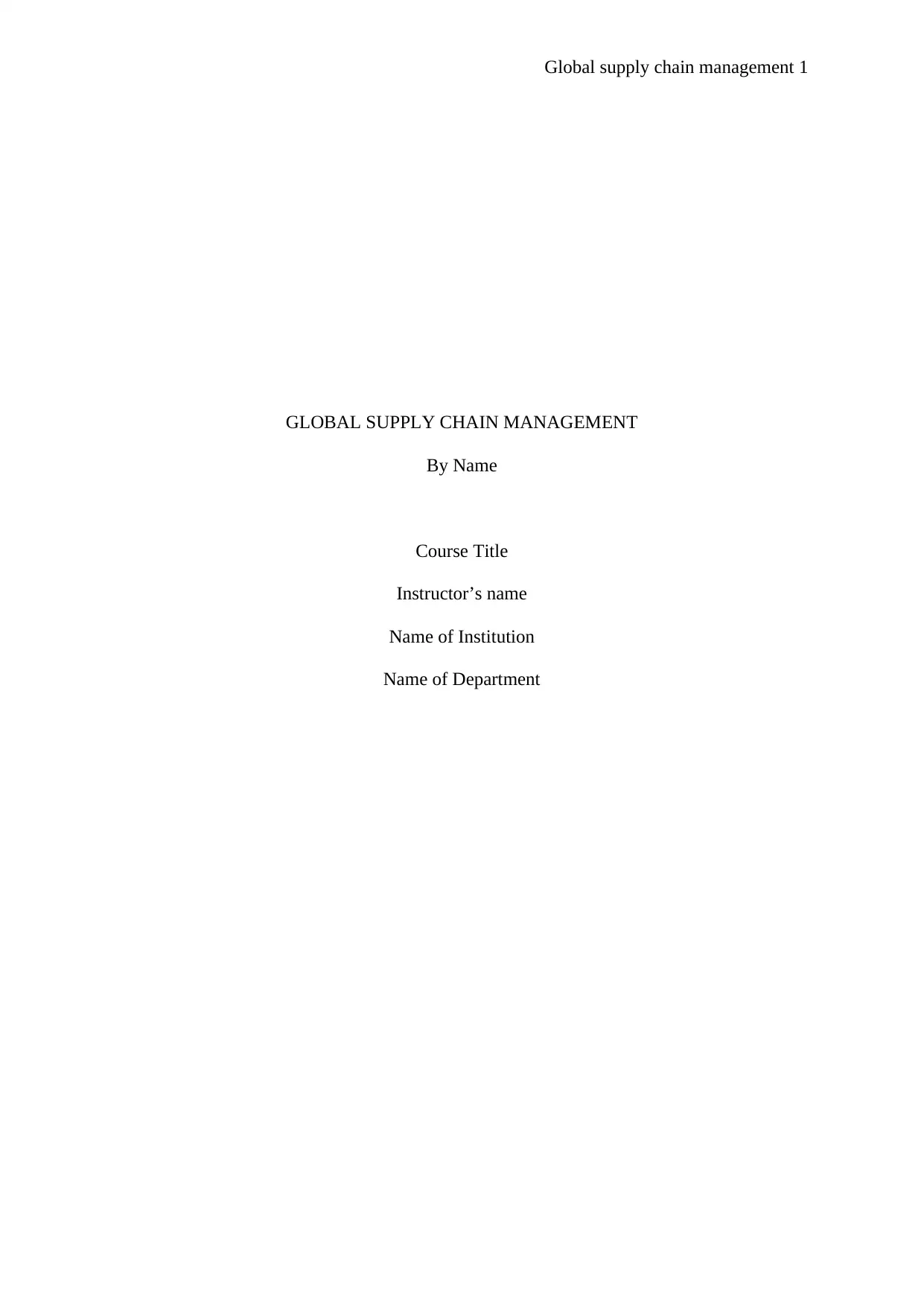
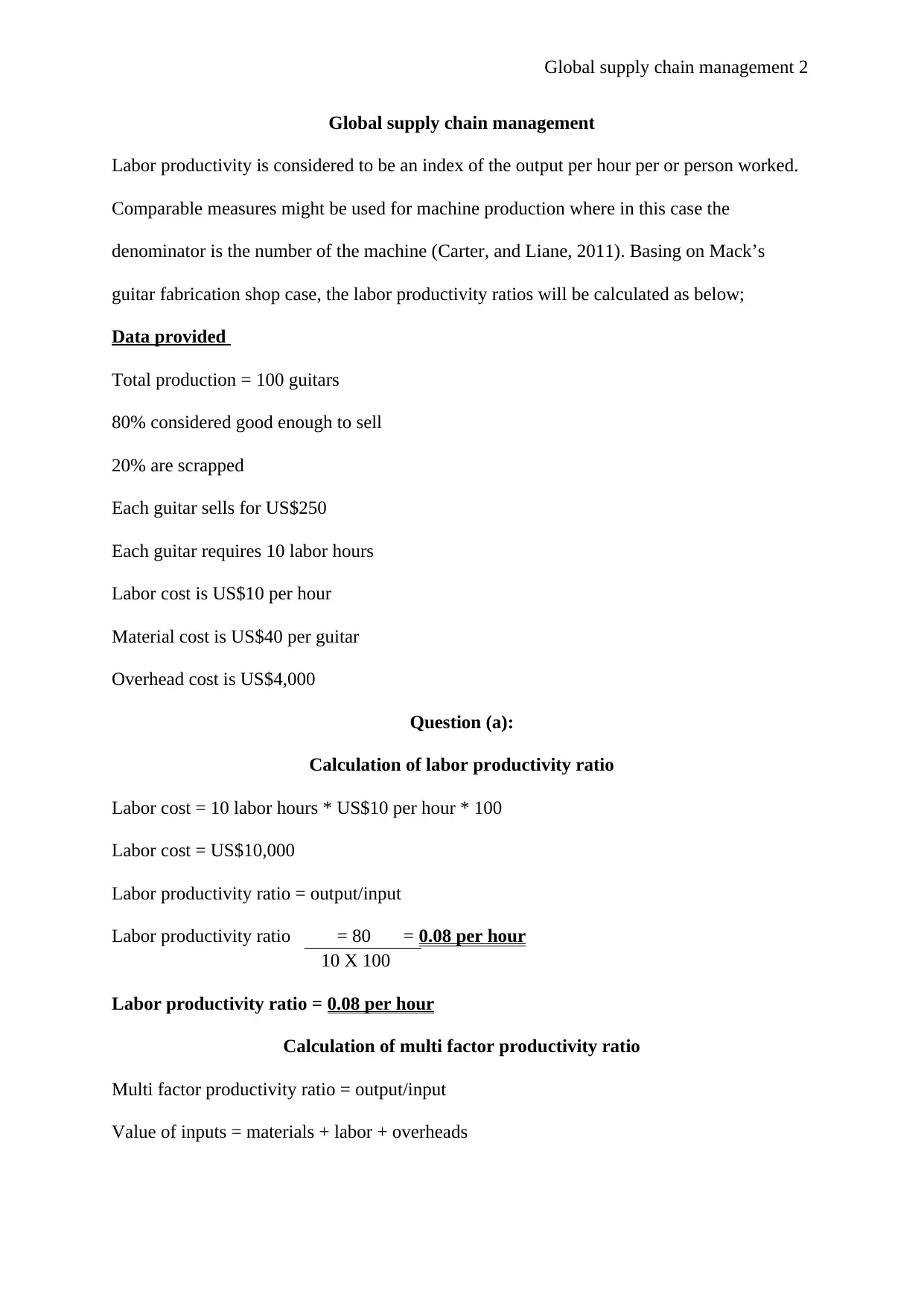
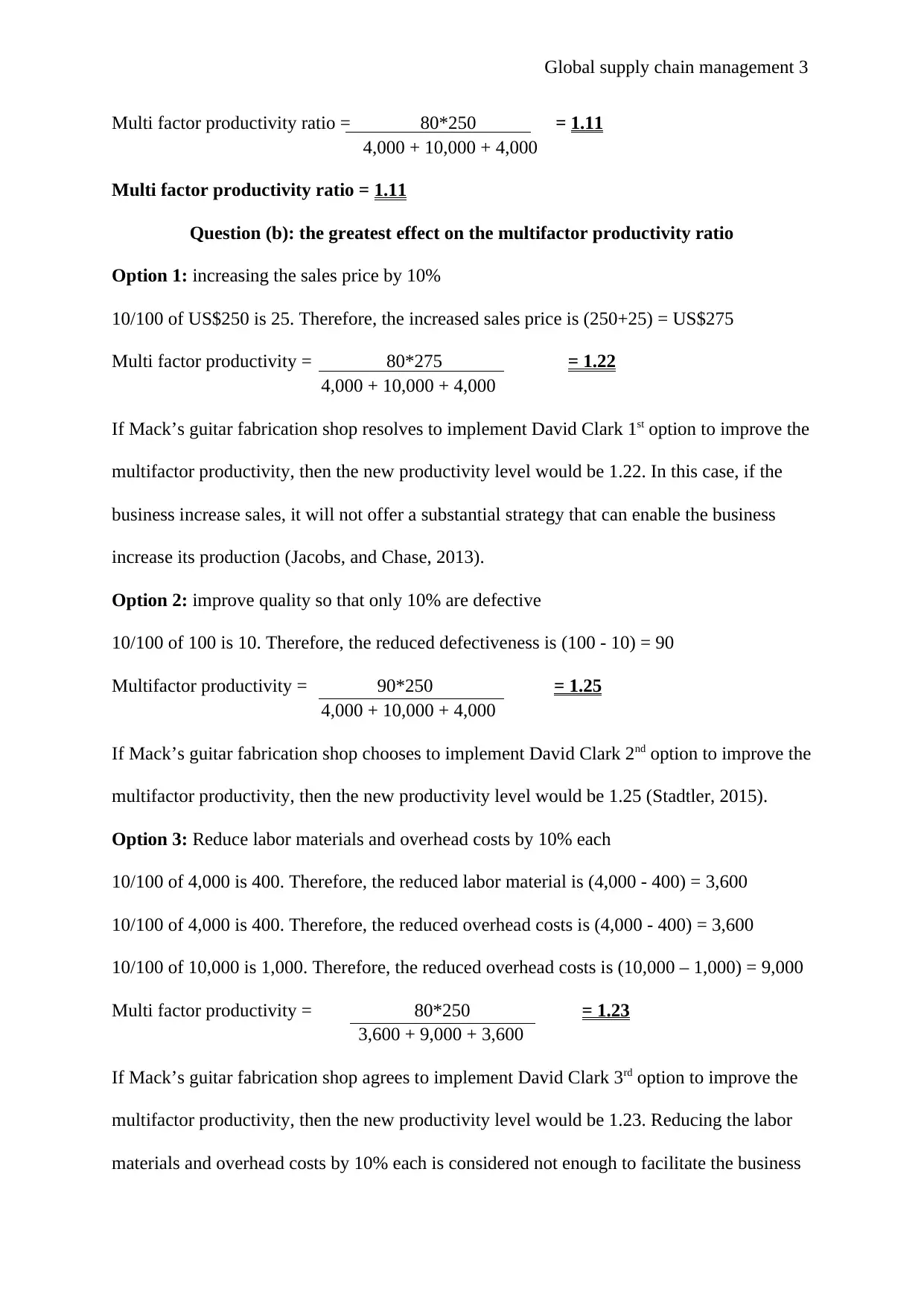

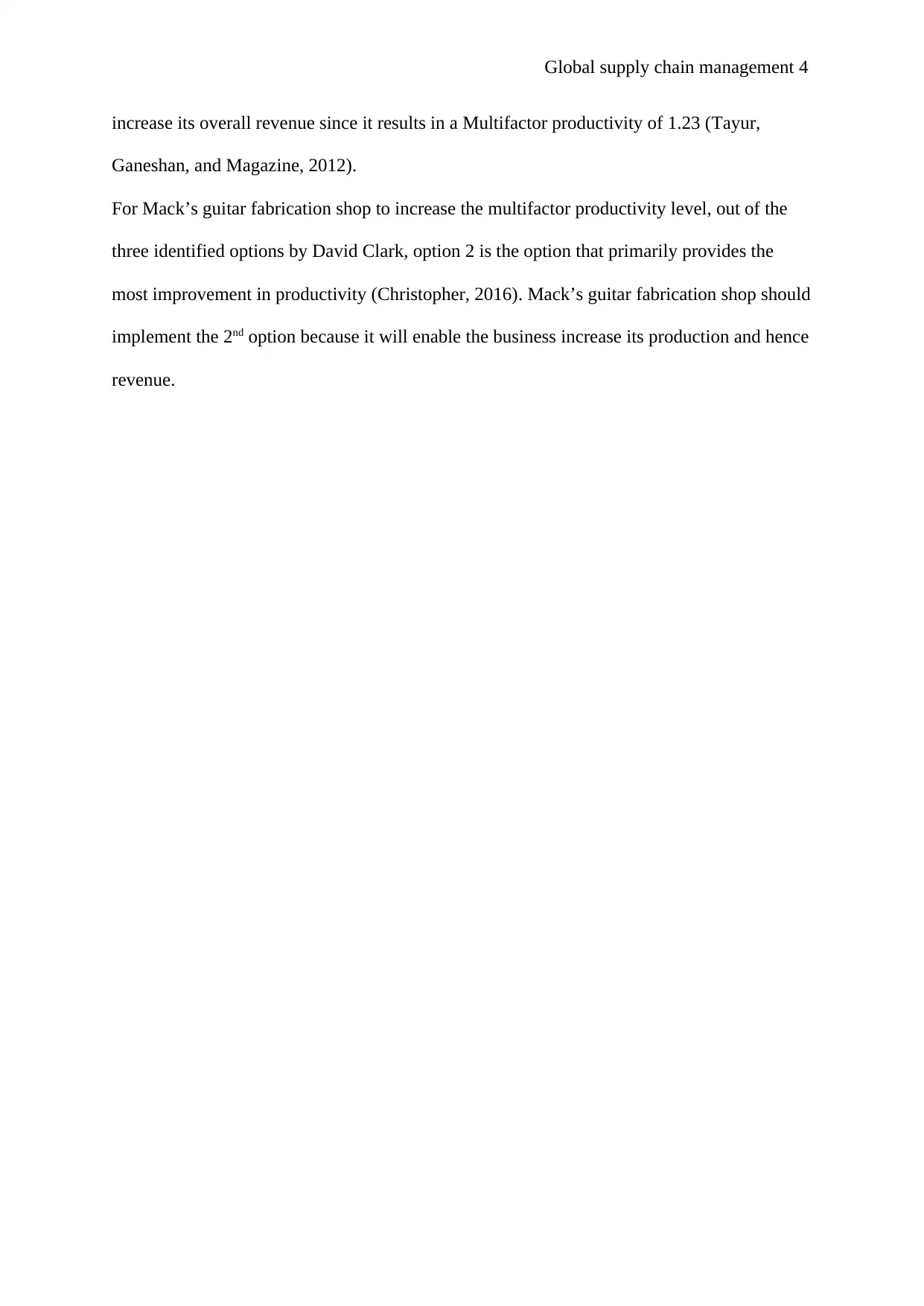
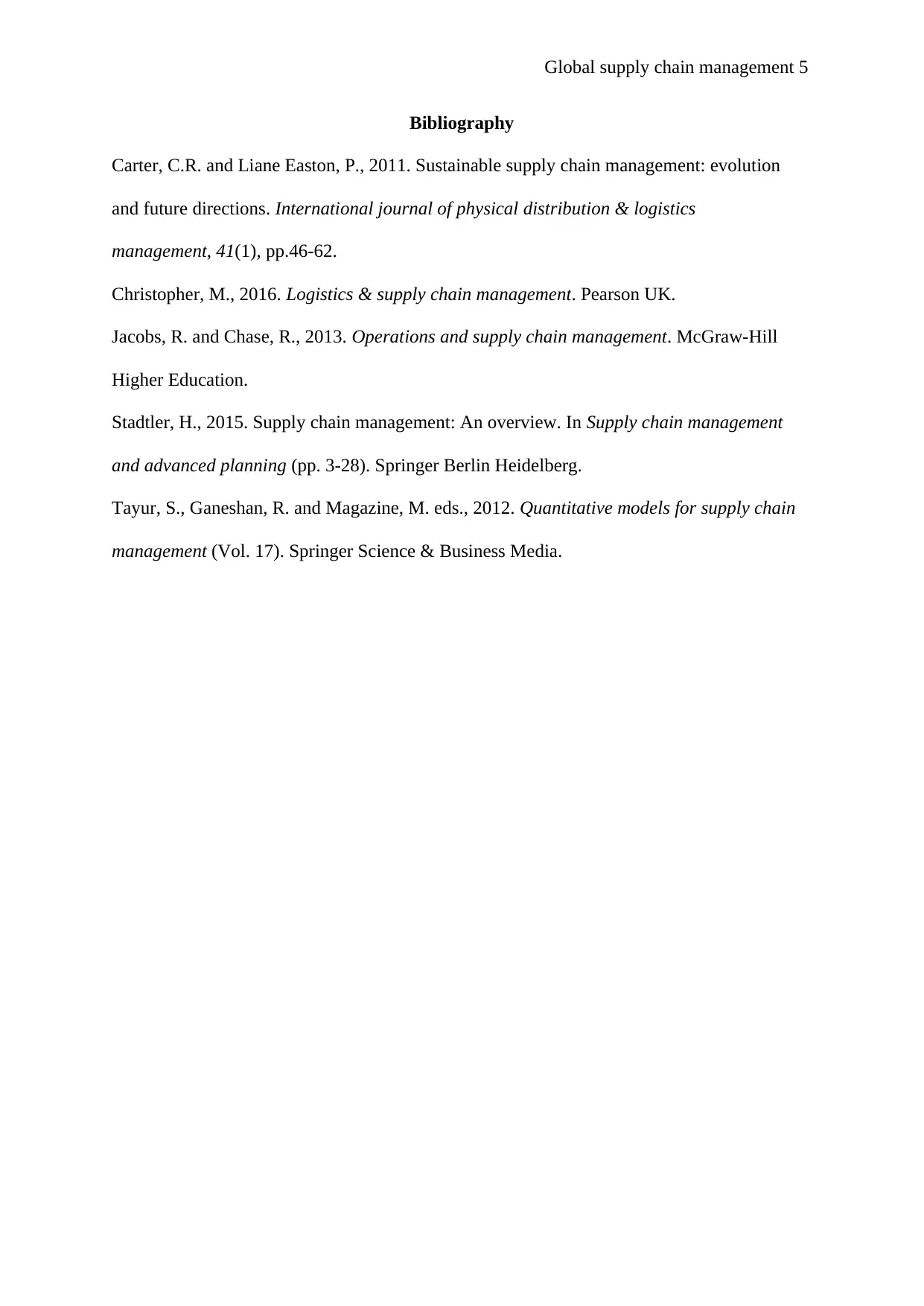
![[object Object]](/_next/static/media/star-bottom.7253800d.svg)